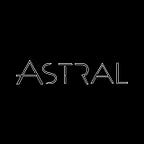In This Issue :
1) History
2) Overview
3) Decentralization
Many of the technologies we now take for granted were quiet revolutions in their time. Just think about how much smartphones have changed the way we live and work. It used to be that when people were out of the office, they were gone, because a telephone was tied to a place, not to a person. Now we have global nomads building new businesses straight from their phones. And to think: Smartphones have been around for merely a decade.
We’re now in the midst of another quiet revolution: blockchain, a distributed database that maintains a continuously growing list of ordered records, called “blocks.” Consider what’s happened in just the past 10 years
Blockchain seems complicated, and it definitely can be, but its core concept is really quite simple. A blockchain is a type of database. To be able to understand blockchain, it helps to first understand what a database actually is. A database is a collection of information that is stored electronically on a computer system. Information, or data, in databases is typically structured in table format to allow for easier searching and filtering for specific information. What is the difference between someone using a spreadsheet to store information rather than a database?
Spreadsheets are designed for one person, or a small group of people, to store and access limited amounts of information. In contrast, a database is designed to house significantly larger amounts of information that can be accessed, filtered, and manipulated quickly and easily by any number of users at once.
Large databases achieve this by housing data on servers that are made of powerful computers. These servers can sometimes be built using hundreds or thousands of computers in order to have the computational power and storage capacity necessary for many users to access the database simultaneously. While a spreadsheet or database may be accessible to any number of people, it is often owned by a business and managed by an appointed individual that has complete control over how it works and the data within it.
One key difference between a typical database and a blockchain is the way the data is structured. A blockchain collects information together in groups, also known as blocks, that hold sets of information. Blocks have certain storage capacities and, when filled, are chained onto the previously filled block, forming a chain of data known as the “blockchain.” All new information that follows that freshly added block is compiled into a newly formed block that will then also be added to the chain once filled.
A database structures its data into tables whereas a blockchain, like its name implies, structures its data into chunks (blocks) that are chained together. This makes it so that all blockchains are databases but not all databases are blockchains. This system also inherently makes an irreversible timeline of data when implemented in a decentralized nature. When a block is filled it is set in stone and becomes a part of this timeline. Each block in the chain is given an exact timestamp when it is added to the chain.
The creation, collection, dissemination, and distribution of all sorts of information in the digital domain rely no longer solely on social processes but increasingly on technology. An algorithm determines the updates you see on Facebook, press agencies rely on data analysis to assess the newsworthiness of information, and social networking sites and blogs are digitally scraped for information to target advertisements at individuals. Blockchain technology is promising to reform digital currency, in order to improve logistics and help manage digital identity in a decentralized and trustless manner. These algorithms are primarily developed and employed by private actors.
Decentralization
Blockchain technology and DLT ( Distributed ledger technology) can be defined as decentralized and trustless ledgers, recording transactions across a peer-to-peer network. These features create the potential to provide transparency as well as accountability. Such technologies could impact not only the financial sector (e.g., Bitcoin, ETH) but also diverse fields such as supply chain management, digital identity, smart contracts, voting (e.g., liquid democracy), health records, water management, and much more.
Blockchain is based on a consensus mechanism. This mechanism basically relies on “hashing” and a type of “proof,” e.g., “proof of work,” “proof of stake,” and other proofs. Hashing is the process of creating a digital fingerprint of any sort of information shared in the transaction. The hash is a way of verifying the authenticity of the transaction. This allows users to identify whether data have been tampered with. The technical specifications of DLT systems are becoming increasingly varied in nature. This shows that often-highlighted features of blockchain technologies, such as immutability, transparency, and trustlessness, are in fact design features rather than sine qua non-conditions. However, one can say that blockchain is a technology that lowers the uncertainty regarding transactions between parties that do not otherwise share trust. The idea of a “trustless” technology means that DLT, by nature of a validated ledger shared across all peers, reduces the uncertainty of not having recourse if something goes wrong with a transaction. Since DLT allows the tracing of every transaction, from the beginning until it is validated and added to the blockchain (or similarly structured ledgers), users can verify whether an error has happened, and also where the error has occurred.
Sources :
Hbr.org
cryptopnews.org
Sciencedirect.com
jobs.mitpress.mit.edu
frontiersin.org
investopedia.com
